Four papers in this issue highlight pollination success: Song et al. (pp 641–650), Mochizuki and Kawakita (pp. 651–663), Chapurlat et al. (pp. 711–721), and Albert et al. (pp. 733–740).
Exploring trees in 3D using Terrestrial Laser Scanner (Technical article)
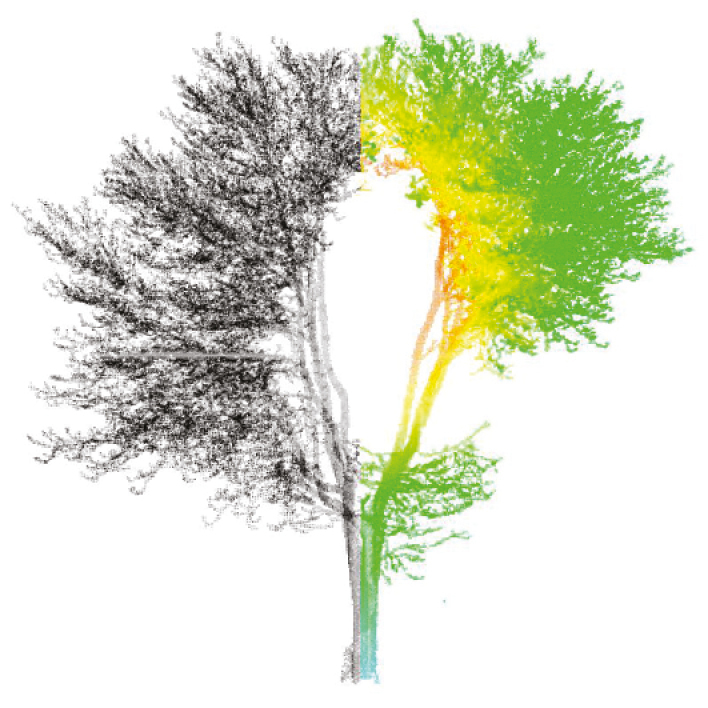
Annals of Botany 121: 589–601, 2018
doi: 10.1093/aob/mcx095
Tree form assessments using the Terrestrial Laser Scanner (TLS) have increased during recent years, but many existing methods are limited to small-sized trees. Based on the assumption that architectural trait variations influence the way a tree explores space, Lecigne et al. present a R package dedicated to derive qualitative (geometrical) and quantitative (volumetric) metrics from TLS point clouds of large tree. Additionally, they use simulated and ‘real world’ TLS data to demonstrate that space exploration is relevant to analyse tree architecture, and to document the effect of voxel size on tree volume estimates and occlusion compensation.
Authors: Bastien Lecigne, Sylvain Delagrange, and Christian Messier
Wheat genetic resources: Progress and challenges in genomics (Review)
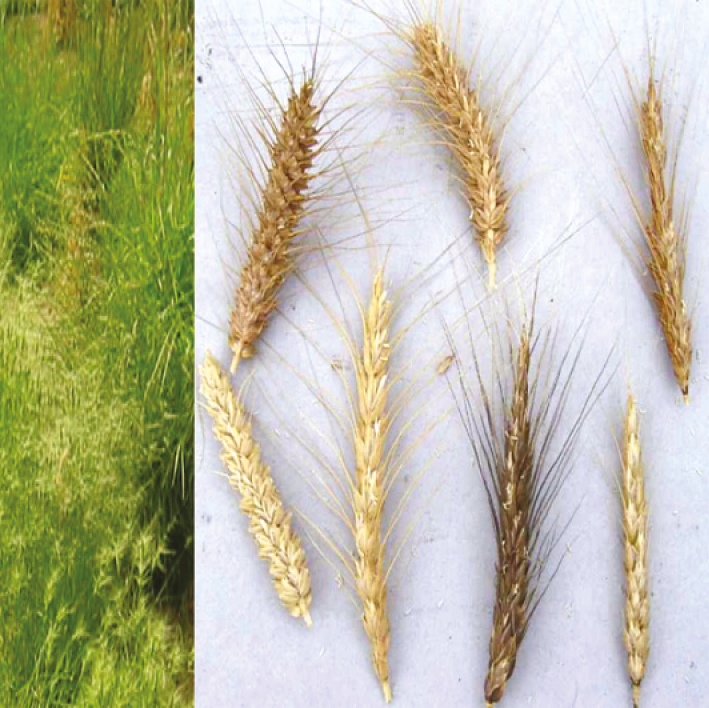
Annals of Botany 121: 603–616, 2018
doi: 10.1093/aob/mcx148
Exploiting wild relatives of wheat for improvement of its cultivated form dates back to 1869; since then it has impacted most areas of wheat pre-breeding research and practical breeding. Rasheed et al. provide a comprehensive overview of recent research efforts and key challenges around wheat genetic resources. They argue that targeted efforts should be directed towards mining genetic resources that will most likely result in immediate and practical impacts. Recent advances in establishing reference genome sequences of bread and durum wheat coupled with ongoing pan-genome sequencing, characterization of elite diverse genotypes and the availability of populations with induced mutations as TILLING resources, will facilitate major gene discovery and dissection of quantitative traits and their subsequent deployment in breeding improved wheat varieties.
Authors: Awais Rasheed, Abdul Mujeeb-Kazi, Francis Chuks Ogbonnaya, Zhonghu He, and Sanjaya Rajaram
Thresholds for the onset of xylogenesis in juniper

Annals of Botany 121: 617–624, 2018
doi: 10.1093/aob/mcx188
Temperature regulates the resumption of cambial activity, but little is known about the effect of water availability on the onset of xylogenesis. Ren et al. monitor the onset of xylogenesis in Juniperus przewalskii during 2009–2014 at its upper and lower treelines in the semi-arid forested area of the northeastern Tibetan Plateau. They find that the onset of xylogenesis is driven by an interaction between thermal and precipitation thresholds, challenging the general opinion that temperature is the only driver of growth resumption. Climatic thresholds for the onset of xylogenesis are key indicators of forest resilience and tipping points under changing climates.
Authors: Ping Ren, Sergio Rossi, J. Julio Camarero, Aaron M. Ellison, Eryuan Liang, Josep Peñuelas
Genetic diversity and dispersal of manioc in Amazonia
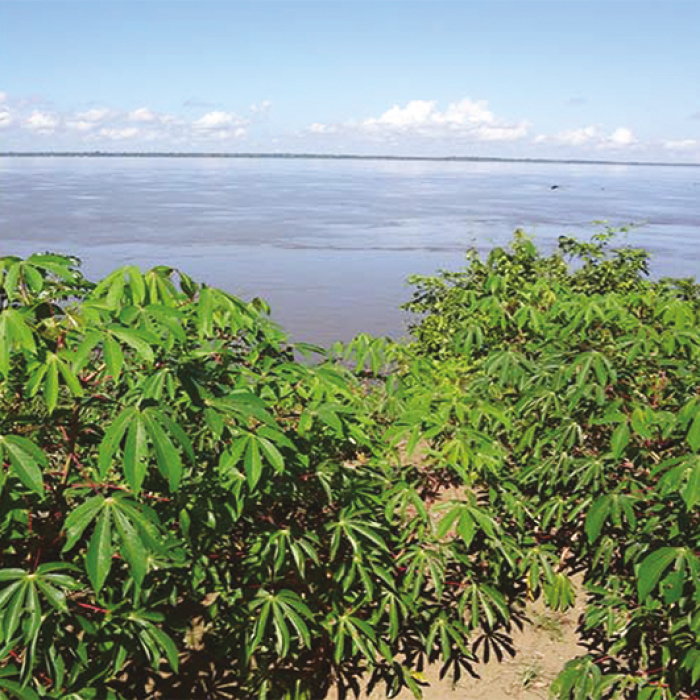
Annals of Botany 121: 625–639, 2018
doi: 10.1093/aob/mcx190
Amazonia is a major world centre of plant domestication, and manioc or cassava (Manihot esculenta, Euphorbiaceae) is currently the most important staple food crop that originated in this region. However, little is known about the dispersal of its two major cultivated groups (bitter and sweet manioc). Alves-Pereira et al. evaluate the genetic diversity and structure of manioc along major Amazonian rivers using chloroplast and nuclear molecular markers. Bitter and sweet manioc have distinctive patterns of genetic structure across rivers, suggesting that they had distinct dispersal histories. Knowledge about how Amazonian people manage their crops is valuable for the maintenance and conservation of the impressive diversity of their native Amazonian genetic resources.
Authors: Alessandro Alves-Pereira, Charles R. Clement, Doriane Picanço-Rodrigues, Elizabeth A. Veasey, Gabriel Dequigiovanni, Santiago L. F. Ramos, José B. Pinheiro, and Maria I. Zucchi
Reversible leaf colour change enhances pollinator attraction and reproductive success
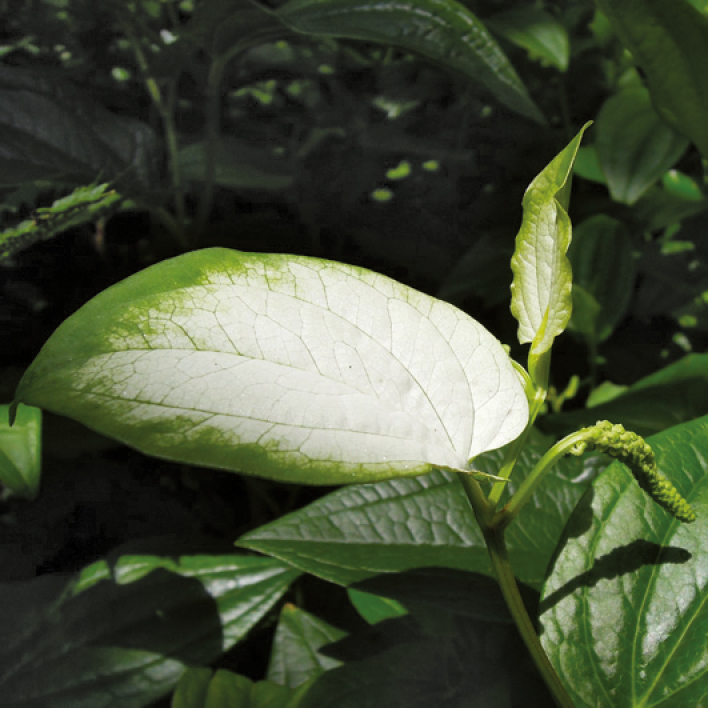
Annals of Botany 121: 641–650, 2018
doi: 10.1093/aob/mcx195
In Saururus chinensis (Saururaceae), two or three apical leaves subtending the inflorescences show ontogenetic colour change from green before flowering, to white during flowering, and then reversion back to green during fruit development. Song et al. investigate the possible functions of this green-to-white-to-green colour change during flowering and fruit development. White leaves attract significantly more pollinators and lead to significantly higher fruit and seed set. Although leaf whitening result in a reduction in photosynthetic capacity, it translate into only a small decrease in seed mass. White leaves that turned back to green after flowering, have a similar photosynthetic capacity as ‘normal’ green leaves and promote seed development. The study contributes to our understanding of how the interaction between plant and pollinator can allow leaves to evolve a new function in flowering plants.
Authors: Bo Song, Jürg Stöcklin, W. Scott Armbruster, Yongqian Gao, Deli Peng, and Hang Sun
Fungus gnat pollination newly found in five families
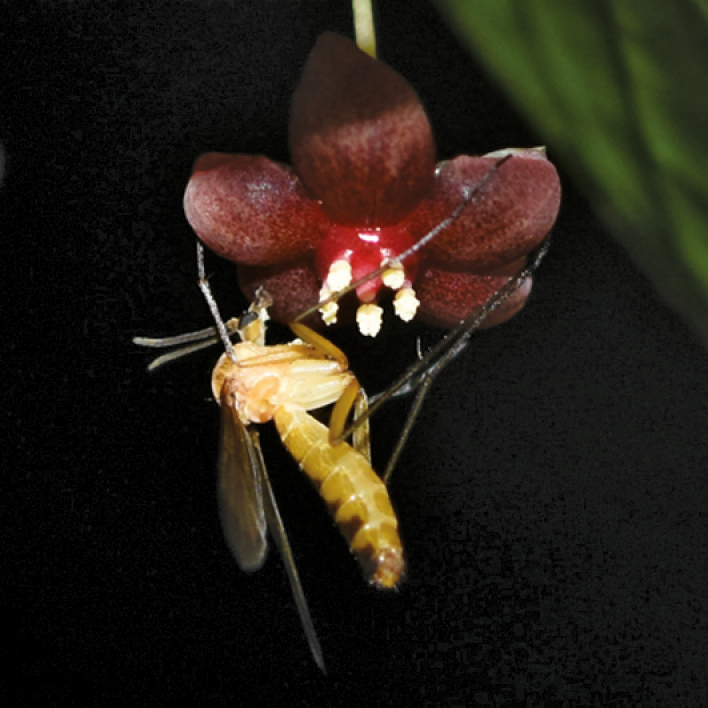
Annals of Botany 121: 651–663, 2018
doi: 10.1093/aob/mcx196
Small dipterans such as fungus gnats are sometimes reported as pollinators, but their role in angiosperm pollination is poorly understood. Through observation of floral visitors and characterization of pollinator importance, Mochizuki and Kawakita show that fungus gnats play dominant roles in the pollination of seven plant species in five genera (Aucuba, Disanthus, Euonymus, Micranthes, and Streptopus). These plants have similar dark red floral displays and a shared overall floral architecture that may be traits associated with fungus gnat pollination. Pollination by fungus gnats is likely more common than previously thought, especially in continuously moist habitats where fungus gnats are abundant.
Authors: Ko Mochizuki and Atsushi Kawakita
Chinese aspen with a dynamic Quaternary evolutionary history
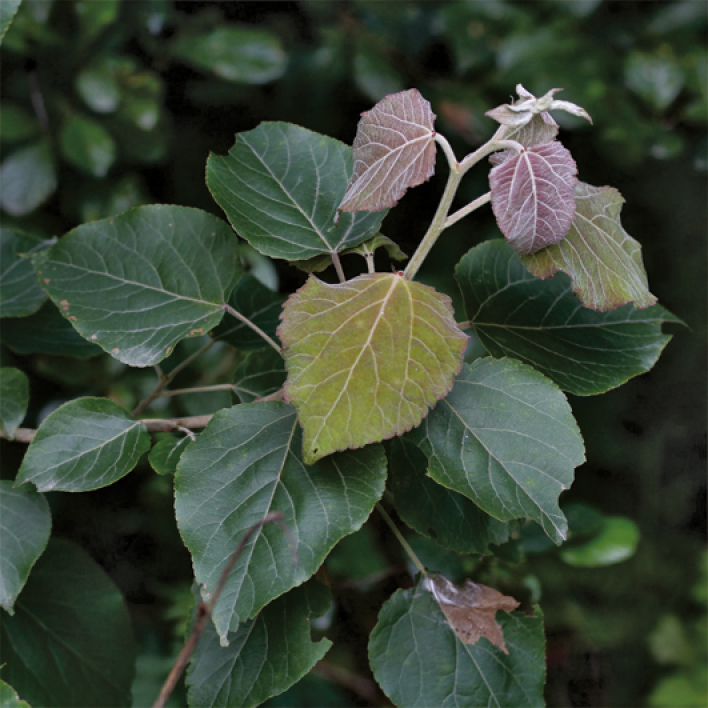
Annals of Botany 121: 665–679, 2018
doi: 10.1093/aob/mcx198
Populus adenopoda (Salicaceae), the Chinese aspen, occurs in the subtropical China region. Fen et al. report a genetic survey to reveal that it survived in multiple glacial refugia during the Last Glacial Maximum (ca. 21 to 18 thousand years ago). Populations in its southern range contain high chloroplast DNA diversity but had little contribution to the post-glacial recolonization of its northern and eastern range. Demographic inferences suggest that P. adenopoda may have experienced multiple rounds of range contraction during the glacial periods and range expansion during interglacial periods. This emphasizes the importance to combine multiple lines of evidences when reconstructing Quaternary population evolutionary history.
Authors: Liqiang Fan, Honglei Zheng, Richard I. Milne, Lei Zhang, Kangshan Mao
New insights into the biology of high-latitude Mesozoic trees
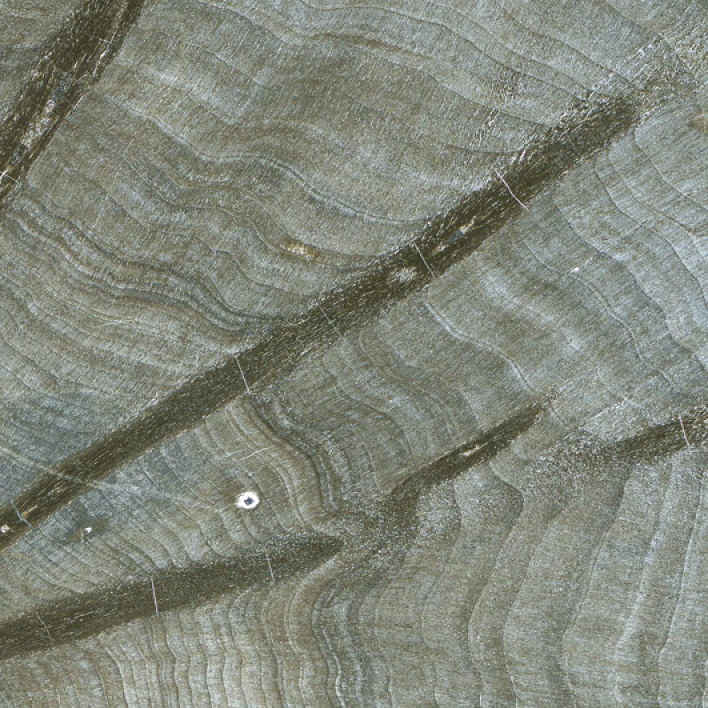
Annals of Botany 121: 681–689, 2018
doi: 10.1093/aob/mcx199
The biology of extinct trees that grew in high-latitude forests during warmer geological periods is of major interest to understand past and future ecosystem dynamics. Decombeix et al. describe a detailed anatomical study of new fossil gymnosperms from the Triassic (ca. 240 my) of Antarctica. The Triassic trees formed epicormic shoots and had traumatic growth zones in their wood indicating that they were subjected to environmental stresses not seen previously from this region. This study provides new insights into aspects of tree growth and response to disturbance in these warm high-latitude forests that have no equivalent today.
Authors: Anne-Laure Decombeix, Rudolph Serbet, and Edith L. Taylor
Native species respond differently to nitrogen addition and disturbance
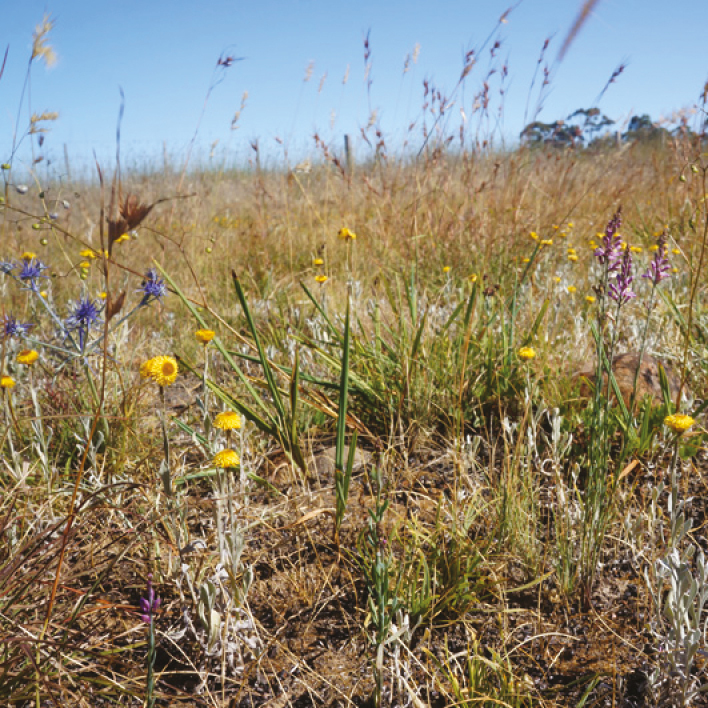
Annals of Botany 121: 691–697, 2018
doi: 10.1093/aob/mcx200
Nitrogen deposition and fire regime suppression are key drivers of vegetation change in urbanising grasslands. In the natural grasslands that surround Melbourne, Australia, some native species have become rarer (decreaser species) across the landscape, while others have become more widespread (increaser species). In this study, Zeeman and Morgan examine experimentally the response of increaser and decreaser native plant species to nitrogen addition/depletion, and the presence/absence of annual disturbance to the vegetation. Their results provide evidence that by affecting plant growth, nitrogen deposition and declines in disturbance frequency could be key drivers of biotic homogenisation in urban grasslands.
Authors: Ben J. Zeeman and John W. Morgan
Waterlogging tolerance in the forage legume Melilotus siculus
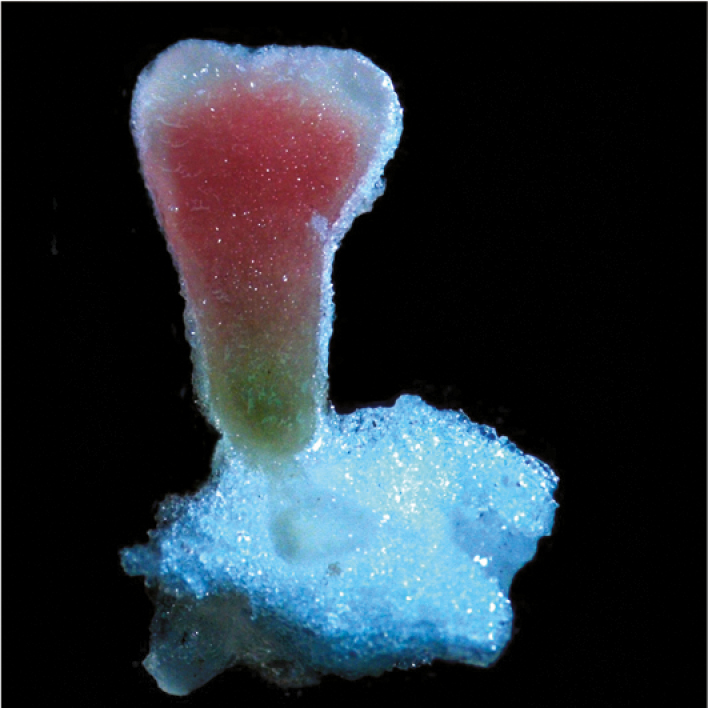
Annals of Botany 121: 699–709, 2018
doi: 10.1093/aob/mcx202
Messina (Melilotus siculus, Fabaceae) is a waterlogging-tolerant annual forage legume, but data were lacking for the effects of waterlogging on nodulated plants reliant on N2 fixation. Konnerup et al. find that plants inoculated with the appropriate rhizobia, Ensifer (syn. Sinorhizobium) medicae, formed nodules. Nodulated plants grew similarly well as plants fed NO3-, both in drained and waterlogged conditions. In waterlogged conditions the relatively high respiration rates of nodules relied on O2 movement via the secondary aerenchyma (phellem) in hypocotyl, roots and the outer tissue layers of nodules, which we demonstrated using microelectrodes.
Authors: Dennis Konnerup, Guillermo Toro, Ole Pedersen, and Timothy D. Colmer
Floral scent emission matches diurnal and nocturnal pollinators in Gymnadenia
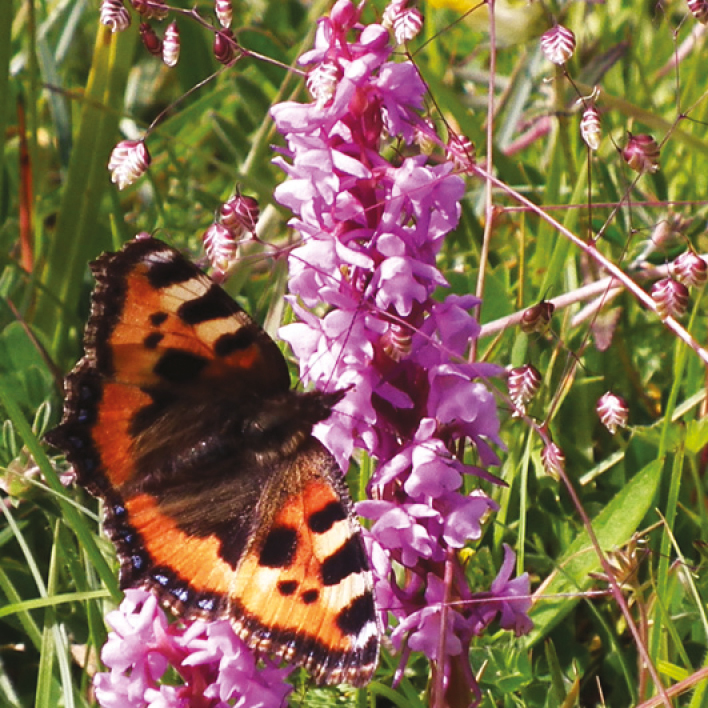
Annals of Botany 121: 711–721, 2018
doi: 10.1093/aob/mcx203
Floral scent is a key attractant to pollinators, and its composition and timing of emission should match the main pollinator type and time of activity. Chapurlat et al. test whether diel variation in scent emission and composition in the fragrant orchid, Gymnadenia conopsea (Orchidaceae), differ between populations dominated by nocturnal versus diurnal pollination. Both scent composition and emission rates differed markedly between day and night, and the increase in scent emission from day to night was stronger in populations with nocturnal pollination. These differences persisted in a common environment, indicating that scent variation has a genetic basis. Chapurlat et al. suggest that different scent emission rhythms is a result of spatial variation in relative importance of nocturnal and diurnal pollinators, and that timing of scent emission is an important component of scent variation.
Authors: Elodie Chapurlat, Joseph Anderson, Jon Ågren, Magne Friberg, and Nina Sletvold
Effect of aperture number on pollen performance in Arabidopsis thaliana
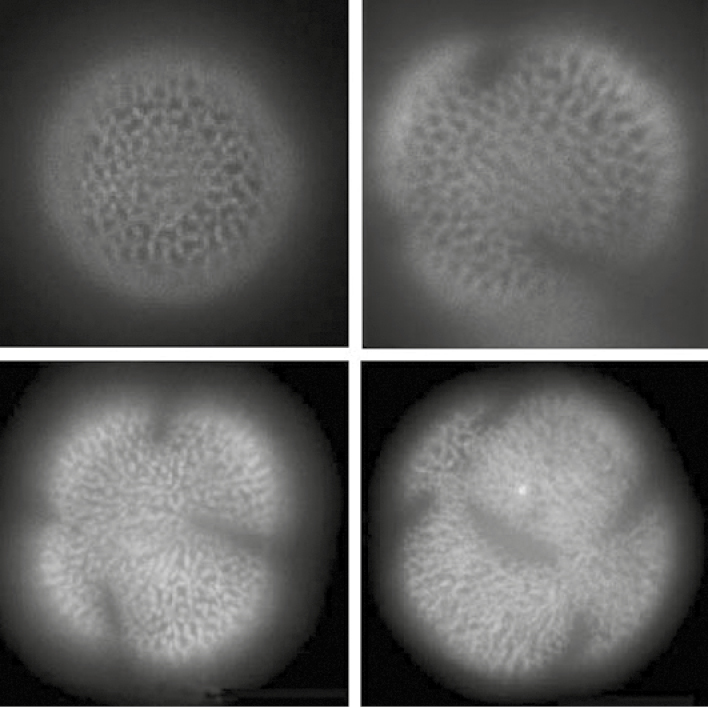
Annals of Botany 121: 733–740, 2018
doi: 10.1093/aob/mcx206
Triaperturate pollen is the most conspicuous synapomorphy of the highly successful eudicot clade. It was previously suggested that this pollen morphology represents the major evolutionary adaptation, and that the stasis of triaperturate pollen is likely the result of selective advantage provided by this morphology. Arabidopsis mutants producing pollen with different aperture numbers allows Albert et al. to investigate the effect of aperture number on several pollen performance traits (survival, germination, and reproductive success). Aperture number indeed appeared to have an effect on pollen performance. Triaperturate pollen outperformed other aperture types, which might explain the evolutionary success of this aperture pattern in eudicots.
Authors: Béatrice Albert, Adrienne Ressayre, Christine Dillmann, Ann L. Carlson, Robert J. Swanson, Pierre-Henri Gouyon, and Anna A. Dobritsa
Biomineralization in the Trichomes of Boraginales
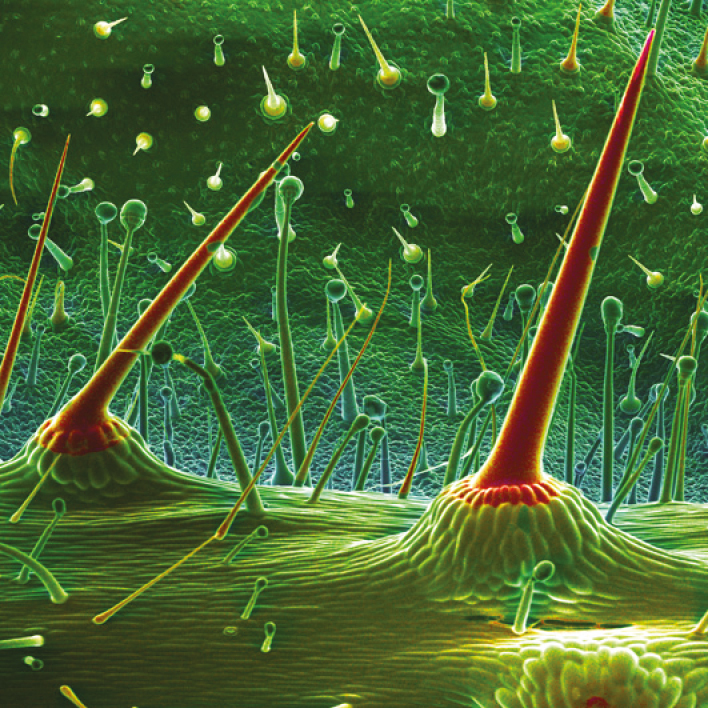
Annals of Botany 121: 741–751, 2018
doi: 10.1093/aob/mcx191
Boraginales are typically characterized by a dense cover of stiff, mineralized trichomes, likely providing protection against herbivores. These trichomes have long been known to be mineralized with silica. Mustafa et al. investigate detailed biomineralization patterns in representative species from nine families of the order Boraginales by using cryo-SEM and EDX element analysis. Three zones (tip, shaft, and base) of the trichomes showed distinct mineralization patterns: (i) tips contained either silica or calcium phosphate; (ii) shafts usually contained calcium carbonate, or calcium phosphate in few cases; (iii) bases often had additional silica deposits. A comparison with the phylogeny of Boraginales reveals a striking phylogenetic signal in the details of biomineralization patterns.
Authors: Adeel Mustafa, Hans-Jürgen Ensikat, and Maximilian Weigend
Evolution of mating system, life history, and photosynthetic physiology in Clarkia
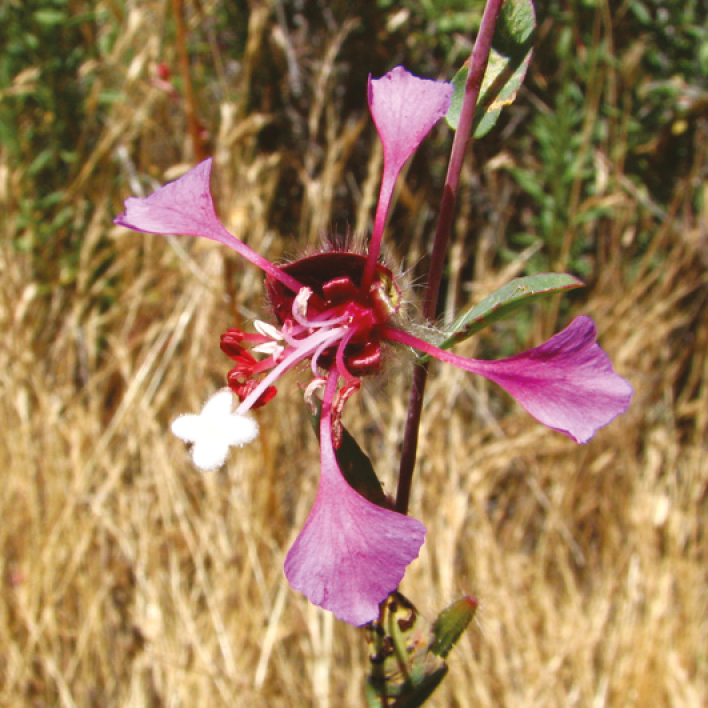
Annals of Botany 121: 753–766, 2018
doi: 10.1093/aob/mcx197
In the western United States, Clarkia (Onagraceae) taxa vary in mating system, life history, and photosynthetic physiology. Self-fertilizing taxa bloom earlier in the year and have higher rates of photosynthesis than their most closely related cross-pollinating species. By performing a multi-generational artificial selection experiment, Emms et al. find evidence that these traits evolved independently of one another, rather than in a correlated fashion. This suggests that different genes underlie each characteristic, and that Clarkia populations have the ability to respond to natural selection in multiple ways, with the evolution of one characteristic having little influence on the evolution of the others.
Authors: Simon K. Emms, Alisa A. Hove, Leah S. Dudley, Susan J. Mazer, and Amy S. Verhoeven


